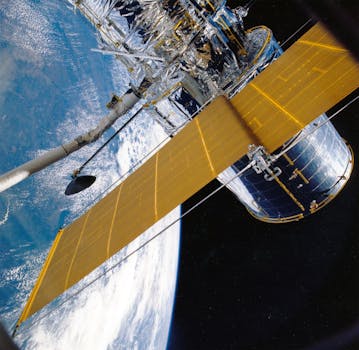GEO Satellites: Understanding the Technology and Applications of Geostationary Orbit Satellites

GEO Satellites: Understanding the Technology and Applications of Geostationary Orbit Satellites
GEO satellites, or Geostationary Orbit satellites, are a type of satellite that orbits the Earth at an altitude of approximately 36,000 kilometers, remaining stationary relative to a fixed point on the equator. This unique characteristic allows GEO satellites to maintain continuous coverage of a specific region, making them an essential component of modern telecommunications. At the beginning of the 21st century, the world witnessed a significant increase in the number of GEO satellites launched into space, with Satellite Today reporting a record number of launches in the year 2020 alone.
The technology behind GEO satellites is complex and fascinating. These satellites are equipped with advanced transponders, antennas, and propulsion systems, which enable them to maintain their position and transmit signals back to Earth. The signals transmitted by GEO satellites are used for a variety of applications, including television broadcasting, telecommunications, weather forecasting, and navigation. For instance, the European Space Agency uses GEO satellites to provide critical weather forecasting data to countries around the world.
Applications of GEO Satellites

GEO satellites have a wide range of applications, from telecommunications and television broadcasting to weather forecasting and navigation. One of the most significant applications of GEO satellites is in the field of telecommunications, where they are used to provide internet connectivity, mobile phone coverage, and other communication services to remote and underserved areas. According to a report by NASA Spaceflight, the use of GEO satellites for telecommunications has increased significantly over the past decade, with many companies launching new satellites to meet the growing demand for global connectivity.
In addition to telecommunications, GEO satellites are also used for television broadcasting, providing high-quality video and audio signals to millions of viewers around the world. Weather forecasting is another critical application of GEO satellites, as they provide essential data on weather patterns, storms, and other meteorological phenomena. Navigation is also a key application of GEO satellites, as they are used to provide location information and timing signals for GPS and other navigation systems.
Significance of GEO Satellites in the Industry

GEO satellites play a vital role in the modern telecommunications industry, providing critical infrastructure for global connectivity and communication. The significance of GEO satellites can be seen in their ability to provide high-speed internet connectivity, mobile phone coverage, and other communication services to remote and underserved areas. According to a report by Space.com, the global satellite industry is expected to reach $1 trillion by 2025, with GEO satellites playing a significant role in this growth.
In conclusion, GEO satellites are a crucial part of modern telecommunications, playing a vital role in global connectivity and space exploration. Their unique technology and applications make them an essential component of the industry, providing critical infrastructure for telecommunications, television broadcasting, weather forecasting, and navigation. As the demand for global connectivity and communication services continues to grow, the significance of GEO satellites will only continue to increase.
Future of GEO Satellites

The future of GEO satellites looks promising, with advances in technology and the growing demand for global connectivity and communication services driving innovation and investment in the industry. One of the key trends in the future of GEO satellites is the development of new technologies, such as high-throughput satellites and satellite constellations, which will provide faster and more reliable communication services. Another trend is the increasing use of GEO satellites for emerging applications, such as the Internet of Things (IoT) and 5G networks.
See more:






